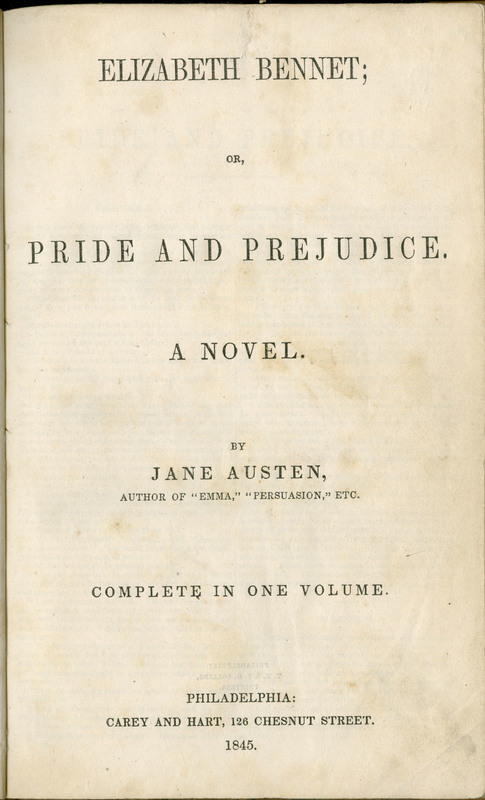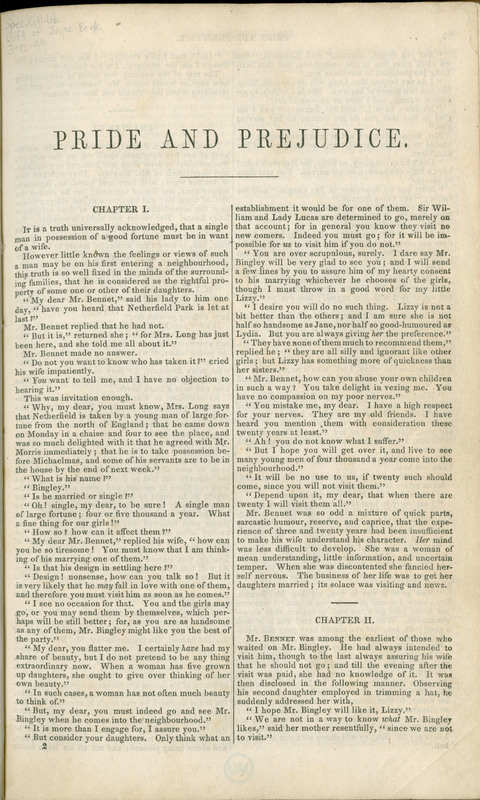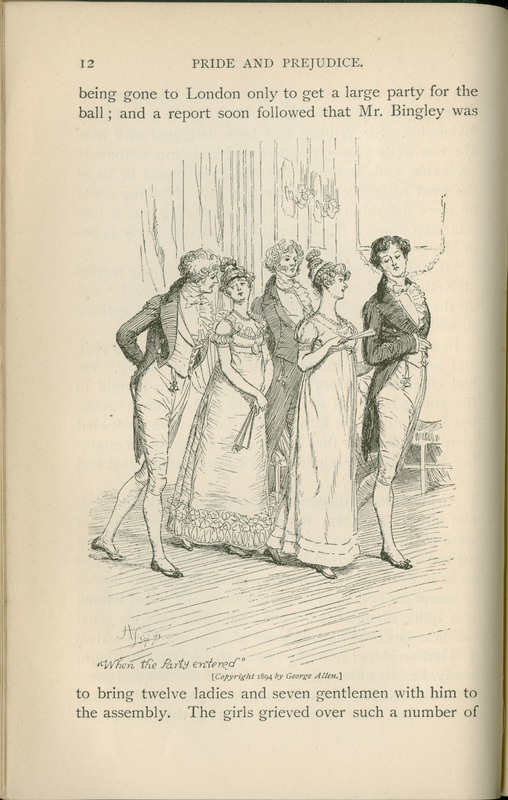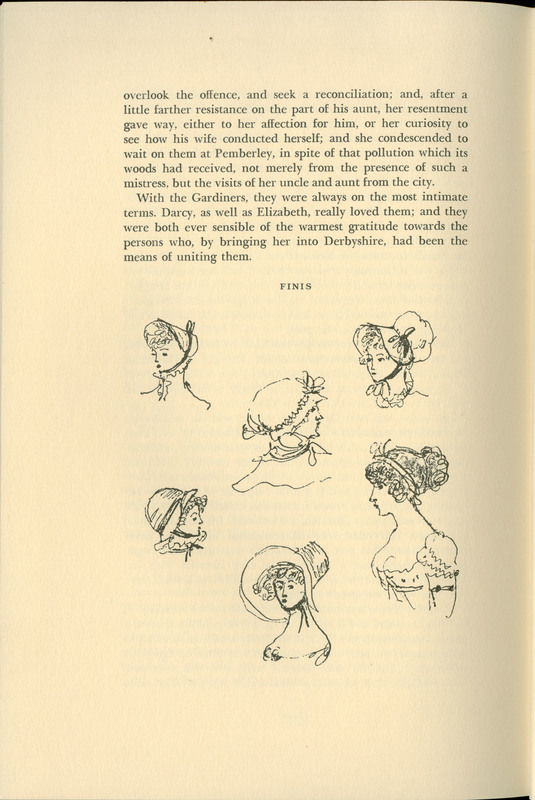Pride and Prejudice
This well-loved 1845 edition of Pride and Prejudice was published by Carey and Hart, a publishing company based in Philadelphia that reprinted many foreign works such as this one and many of Austen’s other novels, but also specialized in the publication of regional writing and frontier humor. This edition’s double columns of text and the altered title of Elizabeth Bennet; or, Pride and Prejudice are meant to mirror the formatting of the first American edition, which was published in 1832 by Carey and Lea, a predecessor to Carey and Hart Publishing. In the 1800s there were no overseas copyright laws, so American publishers like Carey and Hart had free reign to pirate British novels. This edition is made from inexpensive paper and materials, and the font is small and cramped in order to conserve paper and costs of production. In addition, the usual three volumes are compressed into one volume to make the novel even cheaper to produce and acquire. These publishing decisions demonstrate the popularity of Pride and Prejudice, especially since this isn’t the first American edition to be printed. The cheaper materials used suggest a cheaper selling price, making the novel more accessible to a wide audience of Jane Austen enthusiasts in America.
(Chloe Alberta, Karissa Knapp)
In reaction to the wave of British nationalism in the late nineteenth century, a renowned publisher of the time, George Allen, sought to preserve traditional English values by publishing a series of illustrated classic works of literature. His most successful was the “Peacock” edition of Pride and Prejudice, published in 1895. The edition’s iconic features include its gilded peacock cover (symbolic of pride) and 65 full page illustrations, all created by Hugh Thomson. As an acclaimed illustrator of the time, Thomson’s work symbolized grace and refinement, which made him the perfect choice for capturing Allen’s vision. His illustrations fundamentally changed the way that people read the novel by distracting readers from Austen’s satire, and instead directing readers’ focus on her faithful depiction of traditional English values and manners, which Allen hoped to promote. Another motivation of Allen's in publishing the novel was to revive Jane Austen’s legacy, which was threatened by fading popularity amidst changing literary styles. The edition surpassed expectations, selling over 11,605 copies in England and 3,500 copies in the United States, within the first year. Its popularity was partly due to its large appeal across class divisions, gender spheres, and political factions, functioning most basically as a gift book and mark of good taste. George Allen’s revival has proven to be timeless. Thomson’s peacock design has become the iconic representation of Austen’s Pride and Prejudice in contemporary marketing and merchandising, continuing to capture audiences today.
(Jennifer Miller, Audrey Rasch, Anne-Marie Varga)
The significance of this rare late twentieth-century edition of Pride and Prejudice cannot be mistaken. Only 750 copies of this edition were printed. It derives its name from the town of Godmersham, a village in the Ashford District of Kent, England. Pride and Prejudice is notable as the book that was based primarily on Austen’s experiences at her brother’s estate there. The images in this special edition of Pride and Prejudice are exclusive to this edition. This image illustrates the Bennet girls in their various states of dress, a comical image to those familiar with the story.
The edition also features an introduction by one of Austen’s grand nephews detailing the impact the Godmersham estate had on her life. Her brother, Edward was raised by another family in Godmersham and she frequently visited him and his wife to take care of their children. However, it also appears to have been an enjoyable source of inspiration as well. Austen observed and found great pleasure in detailing her day-to-day life there back to her family. Godmersham served as a backdrop for Pride and Prejudice: its stately homes fit a man of Darcy’s nobility. Even today, Godmersham is the home of many magnificent gardens and houses, which stand as tourist attractions. Taking a trip to Godmersham is likely to take one back in time, to the days of high tea and leisurely activities. In fact, Godmersham has hosted scholarly Austen conferences focusing on her life and literary work in recent years. The Godmersham Park Heritage Center boasts an impressive amount of information for anyone interested in visiting the area.
(Elizabeth Baker, Aaron Love)
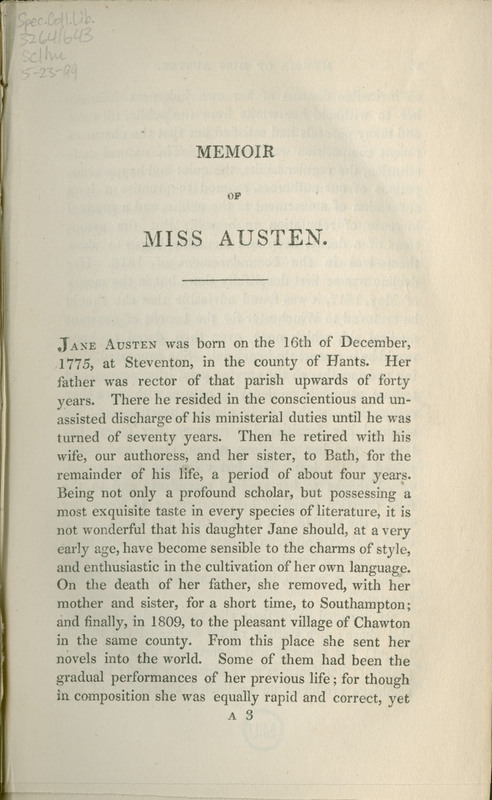
Sense and Sensibility
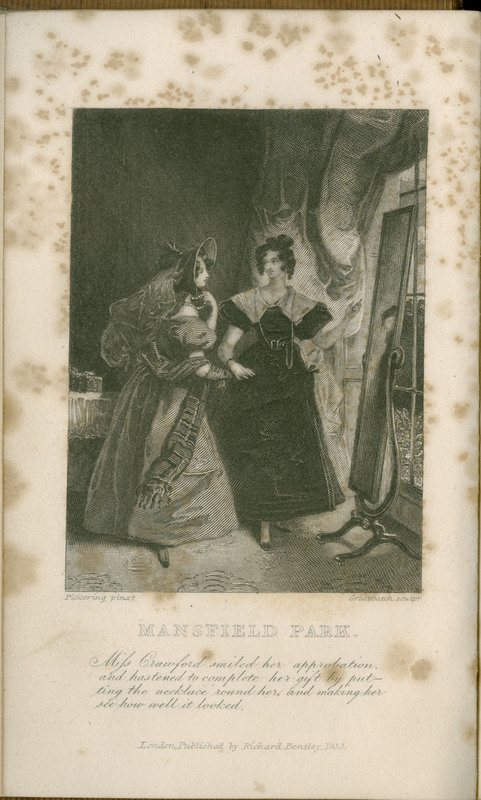
Mansfield Park

